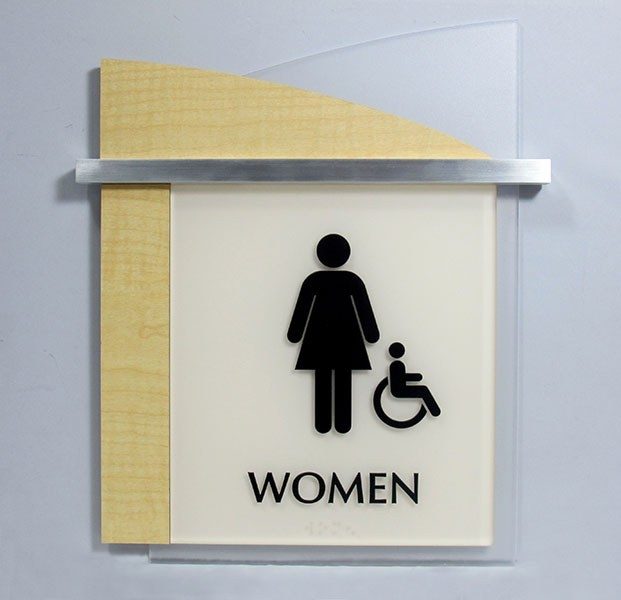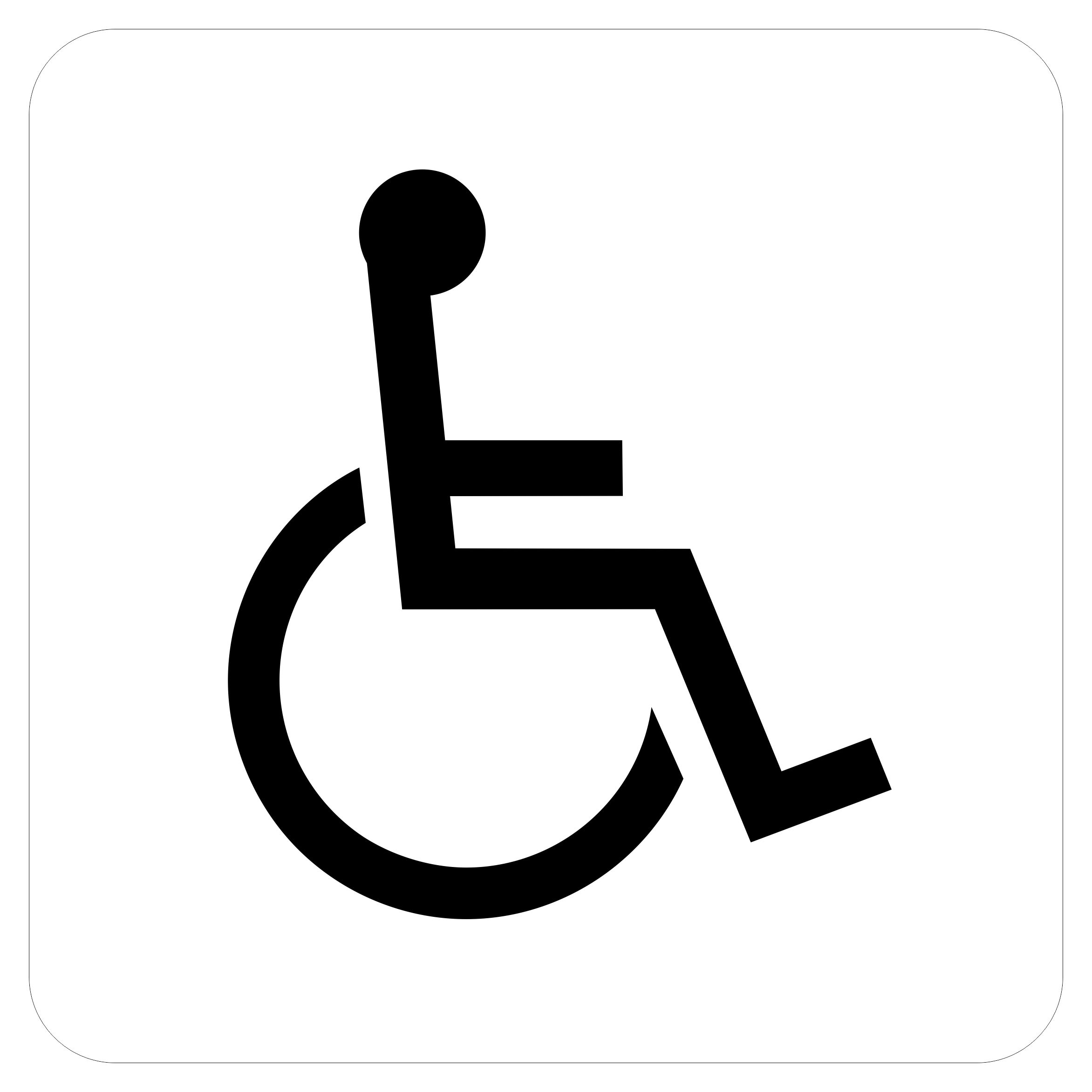Customizing ADA Signs to Meet Your Specific Demands
Customizing ADA Signs to Meet Your Specific Demands
Blog Article
ADA Signage: Making Sure Accessibility and Conformity in Public Spaces
ADA signage plays an indispensable role in guaranteeing availability and conformity within public rooms, significantly contributing to an inclusive environment for individuals with specials needs. As we discover the subtleties of ADA signs, from responsive functions to create details, it's crucial to think about exactly how these elements coalesce to copyright the rights of all users.
Significance of ADA Signage
In modern society, the significance of ADA signs expands past plain conformity with lawful requireds to symbolize a commitment to inclusivity and ease of access for all individuals. These signs are vital in producing atmospheres where individuals with disabilities can browse public areas with the same ease and independence as those without disabilities. By supplying clear and standardized details, ADA signage makes certain that every person can access facilities, services, and information without obstacles.
The value of ADA signage hinges on its capacity to improve the lifestyle for individuals with specials needs by promoting equivalent gain access to. It eliminates the barriers that might or else impede their capacity to take part fully in area life. These indications offer as visible indications of an organization's devotion to diversity and equality, mirroring wider social worths that champion the civil liberties and dignity of all individuals.
Furthermore, ADA signs plays a vital role in public security. By leading individuals to leaves, washrooms, and various other vital centers, it ensures that all individuals, despite physical capacity, can evacuate securely during emergencies. In recap, ADA signage is not simply a regulative need but a powerful tool for cultivating a comprehensive and fair society.
Trick Elements of Compliance

Placement is important; indications need to be mounted in areas that are conveniently noticeable and reachable. Commonly, signs must be installed between 48 and 60 inches from the ground to guarantee ease of access for both standing and wheelchair individuals. Tactile elements, such as Braille, are essential for people with aesthetic disabilities, offering crucial info in a non-visual format.
High-contrast shades between the text and history are essential to improve readability for people with reduced vision. The ADA mandates certain contrast ratios to make certain clearness. Additionally, character size is a crucial factor to consider, with minimum elevation demands dictated by the watching distance to ensure readability from numerous angles.
Design Factors To Consider for Access
Designing easily accessible signage needs a thorough method to guarantee it meets the needs of all individuals, specifically those with impairments. The dimension of the message is similarly crucial, with ADA standards advising a minimal height based on viewing range to ensure readability.
Contrasting shades between text and background are necessary for presence, particularly for individuals with visual disabilities. A high contrast ratio assists identify the text from its background, enhancing readability under various illumination conditions. Furthermore, responsive components, such as Braille and raised characters, are important for individuals who are blind or have low vision. These elements ought to be found at a regular elevation and placement to make certain easy access and comprehension.
Additionally, the placement of signage plays a significant role in ease of access. Signs need to be mounted in areas that are unblocked and quickly reachable. Ensuring that signs is placed at proper elevations and angles enables all users, consisting of those making use of mobility devices, to engage with them successfully.
Typical Mistakes to Avoid

An additional prevalent mistake is the wrong positioning of signage. ADA standards specify specific height and area requirements to ensure that signs are easily visible and reachable by all people, consisting of those using mobility devices. Ignoring these standards not only interferes with availability but additionally runs the risk of non-compliance with lawful requirements.
In addition, insufficient contrast in between text and background is a frequent oversight. Appropriate comparison is necessary for readability, especially for people with low vision. Designers often choose colors that are aesthetically appealing but lack the needed comparison, rendering the text hard to discern.
Finally, some developers fall short to incorporate tactile aspects, such as Braille, which are vital for people who are blind. Omitting these functions not just causes non-compliance with ADA regulations but likewise limits accessibility great post to read for a segment of the population that counts on responsive details.
Future Trends in Signage
Developments in innovation and raising recognition of inclusivity are forming the future patterns in signs why not try here design. As culture becomes more conscious of diverse requirements, the combination of wise innovations into signage is gaining traction. Digital signage, for instance, is developing to include interactive features and real-time updates, which can be essential in offering dynamic information in public rooms. These indicators usually include touch screens or gesture-based controls, allowing users to browse material tailored to their certain demands.
An additional arising fad is the application of augmented reality (AR) to boost user experience. AR-enabled signs can overlay electronic info onto the physical atmosphere, giving aesthetically impaired individuals with auditory or haptic feedback. ADA Signs. This technology not only boosts access yet also creates an engaging experience for all customers
Sustainability is also a considerable element influencing signage patterns. Environment-friendly materials and energy-efficient lights remedies are being focused check these guys out on to straighten with global environmental objectives. Furthermore, developments in products scientific research are bring about the development of more weather-resistant and durable signs.
Final Thought
ADA signs plays a crucial duty in assuring ease of access and conformity within public rooms by including responsive aspects, high-contrast colors, and calculated positioning. The adherence to ADA criteria not just promotes secure navigating for people with handicaps however likewise symbolizes an organization's dedication to diversity and inclusivity. By avoiding typical errors and accepting future trends, public areas can remain to progress these worths, ensuring that the rights and self-respect of all people are valued and promoted.
ADA signs plays a crucial function in guaranteeing ease of access and compliance within public rooms, dramatically adding to a comprehensive setting for individuals with impairments. As we explore the subtleties of ADA signs, from tactile features to make ins and outs, it's essential to consider just how these aspects coalesce to copyright the civil liberties of all customers.In contemporary society, the significance of ADA signage extends past simple compliance with lawful mandates to personify a dedication to inclusivity and availability for all individuals. By giving standardized and clear info, ADA signage makes certain that everybody can access centers, solutions, and information without barriers.
ADA signage plays a crucial role in ensuring accessibility and conformity within public spaces by incorporating responsive aspects, high-contrast shades, and calculated placement. (ADA Signs)
Report this page